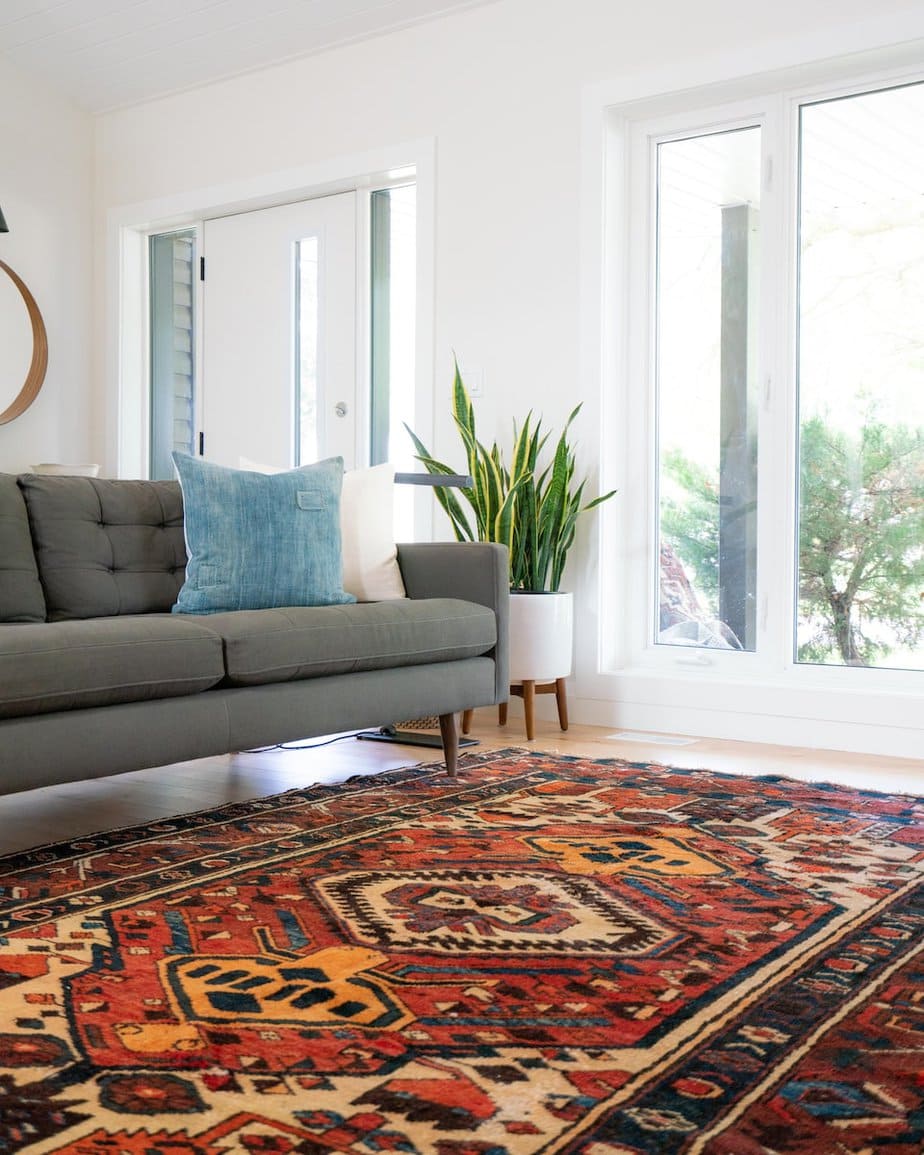Carpets can make or break the look of any room. If you’re in the market for a new carpet, there’s a lot to consider. What type of carpet do you need?
How much should I spend on my new carpet? Should I buy patterned or solid carpets? This guide will answer all of these questions and more!
Carpet Buying Guide
Shopping for a new carpet? Don’t buy anything until you see this guide!
If you’re shopping for new carpeting, don’t buy anything until you see this guide!
- Choose the right type of carpet for your home: Are you looking for a luxurious wool rug or do you want an easy-to-clean synthetic shag?
- Read up on what to look for in a carpet: Is color important? What about pile height? We’ll help you make an informed decision that’s best suited to your needs.
- Consider how much money is right to spend on the project: Some carpets cost almost nothing while others can easily run into the thousands (and they should). We’ll help figure out what price range is best suited to your budget and expectations.
- Don’t forget about padding! Carpet padding prevents wear and tear on both the floor below and above it—and it makes walking around feel softer than ever before.
Picking the right carpet color

This can be the most difficult part of choosing a carpet. You’ll want to select a color that you like, but it should also match the other things in your home. Here are some tips to help you pick the right color:
- Choose a color that will last. Carpets come in many different shades and types, so choose wisely when selecting one for your home. Some carpets don’t hold up well under foot traffic while others stain easily and require frequent cleaning.
- Choose a color that matches your decor or style preferences by thinking about how much time you spend in that room each day and what activities occur there (e.g., family gatherings). For example, if you entertain often and have people over often then choose something neutral because it will hide dirt better than bold colors such as red which show even after vacuuming!
What type of carpet do you need?
If you’re looking for a carpet for your high-traffic areas, steer clear of wool and silk.
These fibers tend to have low recovery and can feel rigid underfoot. Instead, opt for nylon or polyester blends with higher resilience properties.
Nylon is particularly good at resisting abrasion and staining; it’s also the most durable type of synthetic fiber available today.
If you want something more luxe but still practical (and stain-resistant), consider wool carpets made with an anti-static finish that keep dirt from sticking on top of them.
For bedrooms or other spaces where people relax and unwind after work, natural fibers like sisal are an excellent choice because they tend to be softer than synthetic ones like polypropylene—and they’re often grown organically too!
Should I buy patterned or solid carpet?
Should you choose a patterned carpet? You might be tempted to go with solid colors or a basic pattern, but if you consider some of the options available, you may decide that a pattern is worth the investment.
For example, if your room has a lot of furniture and wall decorations that need to stand out from the flooring, then choosing a bolder and more noticeable option will help make all those other elements pop.
If you’re looking for something subtler, though, then perhaps consider laying down some area rugs instead—they can add an extra dimension to any space without overwhelming it.
For example, A few large carpets in complementary colors on opposite sides of your living room can tie together everything from tables and chairs to lamps and throw pillows by creating additional visual interest throughout the room without detracting too much attention away from your favorite pieces.
How much should I spend on my new carpet?
You should spend enough on your new carpet to get what you want, but not so much that you can’t afford the installation.
Estimate how much it will cost to hire a pro or do it yourself based on the size of your room and the complexity of installation.
Once you have a budget for the total project, divide it into two separate chunks: one for the carpet and another for installation. Then stick with those numbers as you shop around for each item separately.
That way, if something comes up during shopping (like finding an amazing deal on new flooring), you can use some of that money in place of some from your overall budget without busting out of either category entirely.
Carpet padding is just as important as carpet.
Carpet padding is just as important as carpet. Carpet padding helps your carpet stand up to everyday wear and tear and provides comfort by cushioning your footsteps, reducing noise from walking, and adding warmth to a room.
Carpet pads are usually made of foam or rubber, which makes them easy to cut and install. Some types of carpets require an adhesive backing that is applied directly to the subflooring before laying down the pad. Others have metal staples on one side so they can be stapled into place after laying down your new carpet (you’ll need a staple gun for this step). If you’re going with an adhesive-bonded pad, make sure you read all manufacturer recommendations regarding preparation before beginning installation.
Summary: Shopping for new carpets can be tricky.
Shopping for new carpets can be tricky. Here are some tips to help you out:
- Different types of carpets – There are two main kinds of carpet: cut pile, which is usually made from polyester or nylon, and loop pile, which is made from polypropylene or polypropylene/polyester blend. Cut pile generally has a more plush appearance than loop pile but also tends to be thinner and less durable. Loop pile comes in thicker varieties (like plush), although it still isn’t as thick as cut-pile carpeting.
- Carpet thickness – Carpet thickness varies by manufacturer and type of fiber used (we’ll get into that below). Be sure that you select a thickness suitable for your needs—you don’t want to choose something too flimsy or fragile if your kids are going to be crawling over it all day long! Some manufacturers will offer samples so that you can try out various fibers before purchasing; this is especially useful if you’re not sure what kind of feel would work best in your home.*
Conclusion
Wow, that was a lot of information. We know it can be overwhelming when you’re shopping for new carpets, but hopefully, this guide will help make the process a little bit easier.
Remember to think about what kind of style you want in your home and how much money is available for spending on new floors.
If you have any questions about these tips or if we missed anything important here at CarpetExperts, feel free to reach out! We love talking with our customers about their needs and helping them find the perfect solution for their homes.

